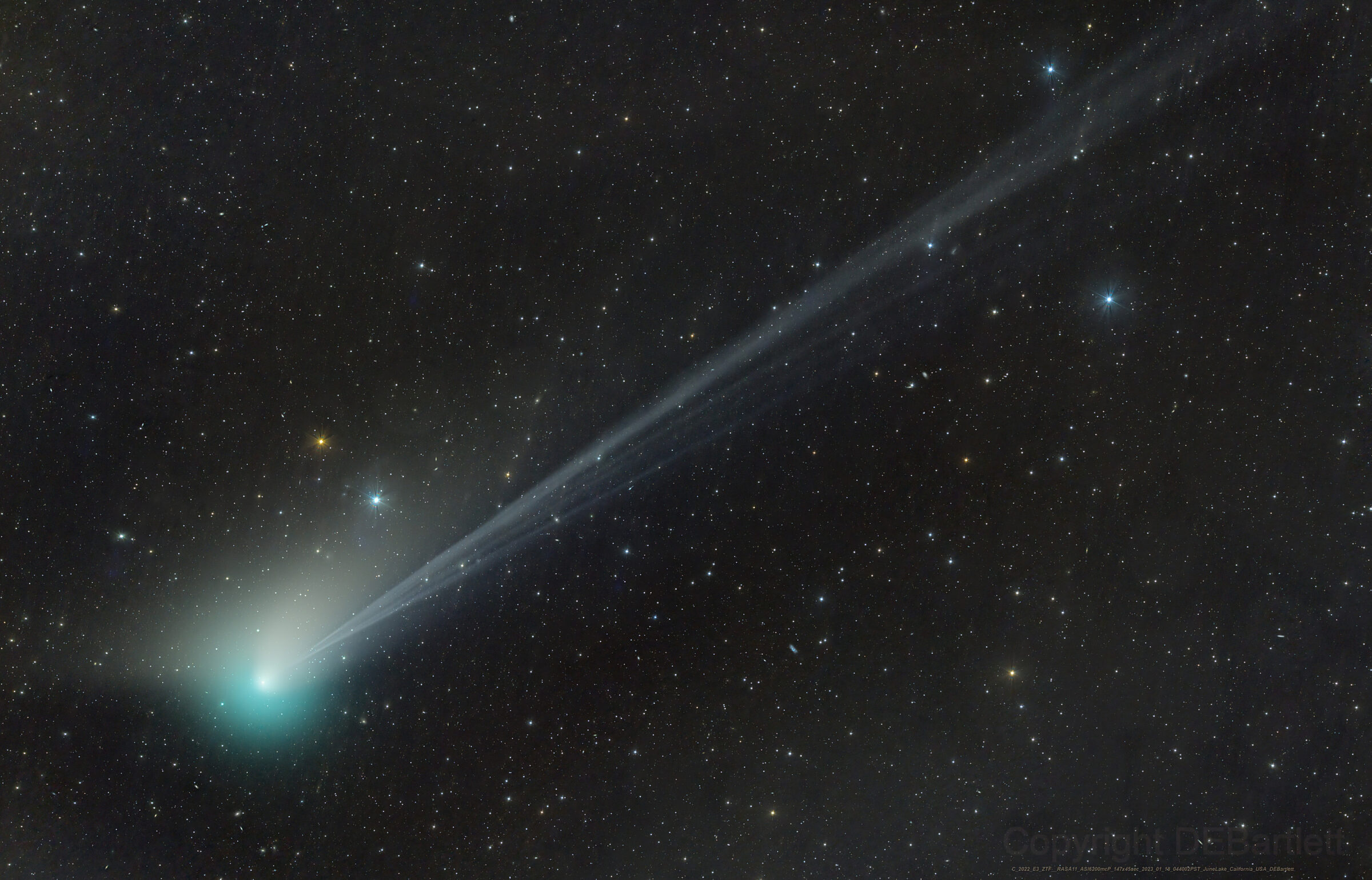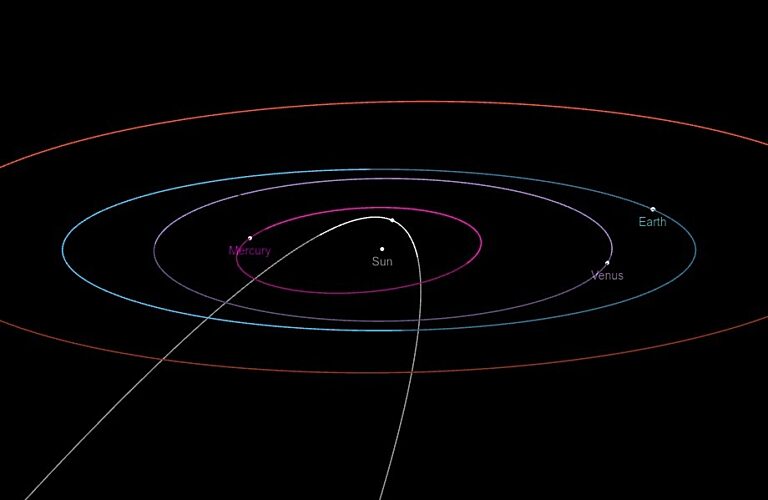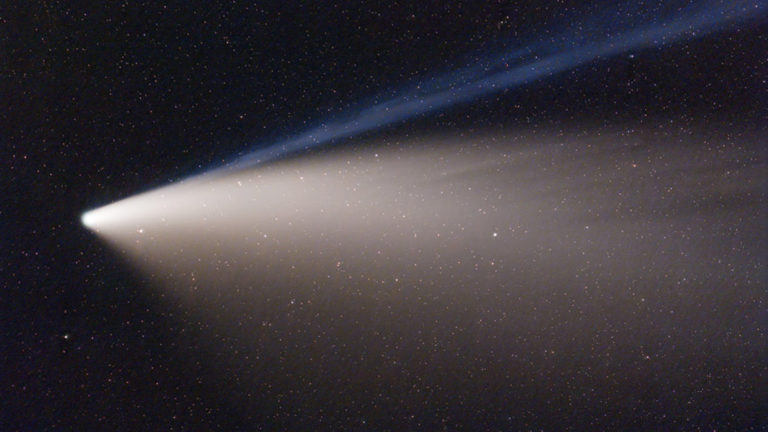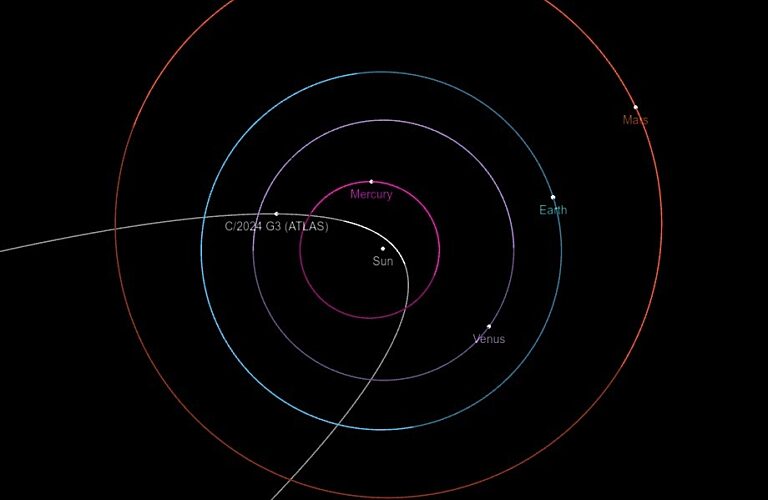Asa Stahl • Dec 18, 2024
How to spot Comet C/2024 G3 (ATLAS)
What is Comet C/2024 G3?
Comet C/2024 G3 (ATLAS) is a bright comet that is about to fly past the Sun. Right now, it is possible to see the comet just before sunrise from some parts of the world.

Comet C/2024 G3 (ATLAS) gets its name from how it was discovered. The "2024 G3" comes from it being the third comet discovered in early April, while the facility that first spotted it is called the Asteroid Terrestrial-impact Last Alert System (ATLAS). Since its initial discovery, amateur astronomers and scientists around the world have made hundreds more observations of this comet. Many tracked Comet C/2024 G3 in hopes that it would become extremely bright — so bright that it outshines the stars.

It's notoriously hard to predict exactly what comets will look like in advance. Originally, some experts thought C/2024 G3 would break apart around the closest point in its orbit to the Sun, or “perihelion.” Then results hinted that Comet C/2024 G3 could be on a roughly 160,000-year orbit. That would mean it has probably survived at least one close approach to the Sun before, though ongoing observations may actually point to this being the comet's first and only trip around the Sun. Either way, it's looking like Comet C/2024 G3 will be the brightest comet of 2025.
You can track how bright Comet C/2024 G3 is by checking the IAU Minor Planet Center or the Comet OBServation database (COBS). Keep in mind that the comet may seem brighter on paper than it really looks in the sky because, unlike a star, a comet’s light can be spread over a broad area of the sky.
When to see Comet C/2024 G3
If you're in the Northern Hemisphere, the next two weeks are the best time to see Comet C/2024 G3. You'll probably need binoculars or a telescope to catch it.

The comet should be visible before sunrise near the horizon in the east. As we pass through December, C/2024 G3 will appear very slightly higher in the sky and be easier to spot, until eventually it also begins to appear closer to the rising Sun and becomes harder to observe. Around mid-January, it will no longer be visible from most of the Northern Hemisphere. But from the Southern Hemisphere, it will be possible to see the comet just after sunset above the horizon in the west, and every day, the comet will start the evening higher in the evening sky. This will be the best time for observers in the Southern Hemisphere to spot Comet C/2024 G3.
The waning Moon, which is set to become a new Moon the night of January 29th, will also make observing the comet easier during this time.
Where can I watch Comet C/2024 G3?
Comet C/2024 G3 will be visible from both the Northern and Southern Hemispheres for the next two weeks, though it will be a bit easier to spot from the southern mid-latitudes.
In January, observers in the Southern Hemisphere may be able to spot the comet with their naked eye. In December, observers around the world will likely need powerful binoculars to see Comet C/2024 G3, and a small telescope with a wide field of view might be even better. Be sure to go somewhere with a good view out to the horizon, since the comet will not appear very high up in the sky until it's already somewhat dimmer. And if you live somewhere with intense light pollution, like the heart of a major city, you will have better odds of spotting the comet if you travel to a darker location farther from lights.

How to see Comet C/2024 G3
In December, look to the constellation Scorpio above the eastern horizon shortly before sunrise. Use binoculars or a telescope to spot the comet — right now, C/2024 G3 is dim enough and appears close enough to the Sun in the sky that it would be extremely difficult to see with the naked eye.
In January, observers in the Southern Hemisphere should look to the constellation Capricornus above the western horizon shortly after sunset. Your ability to see the comet with your naked eye will depend on your eyesight and where you live. No matter what, stargazing from a darker location will give you the best views.
Try to go somewhere with a good view out to the horizon, since the comet will not appear very high up in the sky until it's dimmer. Let your eyes adjust to the dark for several minutes. If you’re using both eyes, look slightly above the comet instead of keeping it in the center of your vision. This “averted vision” technique will help you make out details better in the dark sky.

What is a comet?
Comets are small, irregularly shaped worlds of rock and ice that survived the formation of the Solar System — or that were born out of collisions between other Solar System bodies — and that now orbit the Sun. Comets are similar to asteroids, but more icy because they formed farther from the Sun and continue to spend most of their time there. When they do come closer to the Sun, comets warm up and throw off gas and dust, giving them tails.
It’s likely that Comet C/2024 G3 came from the Oort Cloud, a huge collection of icy bodies that orbit the Sun far beyond any of the planets. C/2024 G3 is expected to return to the far outer Solar System on a long orbit spanning roughly 160,000 years.
Support our core enterprises
Your support powers our mission to explore worlds, find life, and defend Earth. You make all the difference when you make a gift. Give today!
Donate

 Explore Worlds
Explore Worlds Find Life
Find Life Defend Earth
Defend Earth

